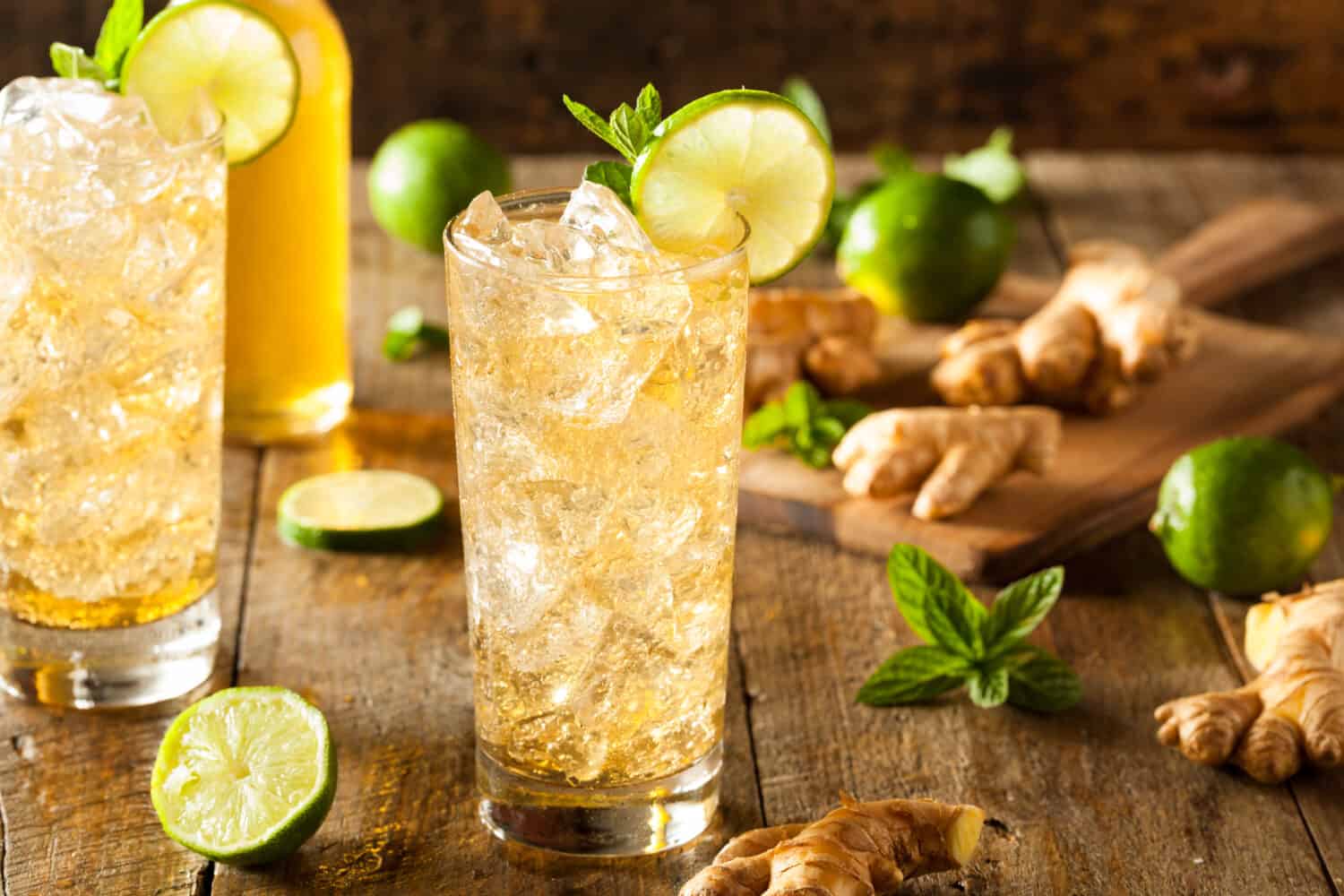Ginger beer and ginger ale are two bubbly beverages flavored with ginger. The spice we know as ginger originates from drying and grinding the rhizome, or root-like underground structure, of a plant called Zingiber Officinale. Ginger is a flowering plant native to Asia, and its relatives include other well-known spices like turmeric, galangal, and cardamom.
Ginger beer and ginger ale share some similarities but are made in different ways and have unique flavor profiles. Therefore, it’s important to learn the differences between the two beverages and decide which will best serve your purposes. Keep reading to discover more about ginger beer and ginger ale and get cocktail ideas for both.
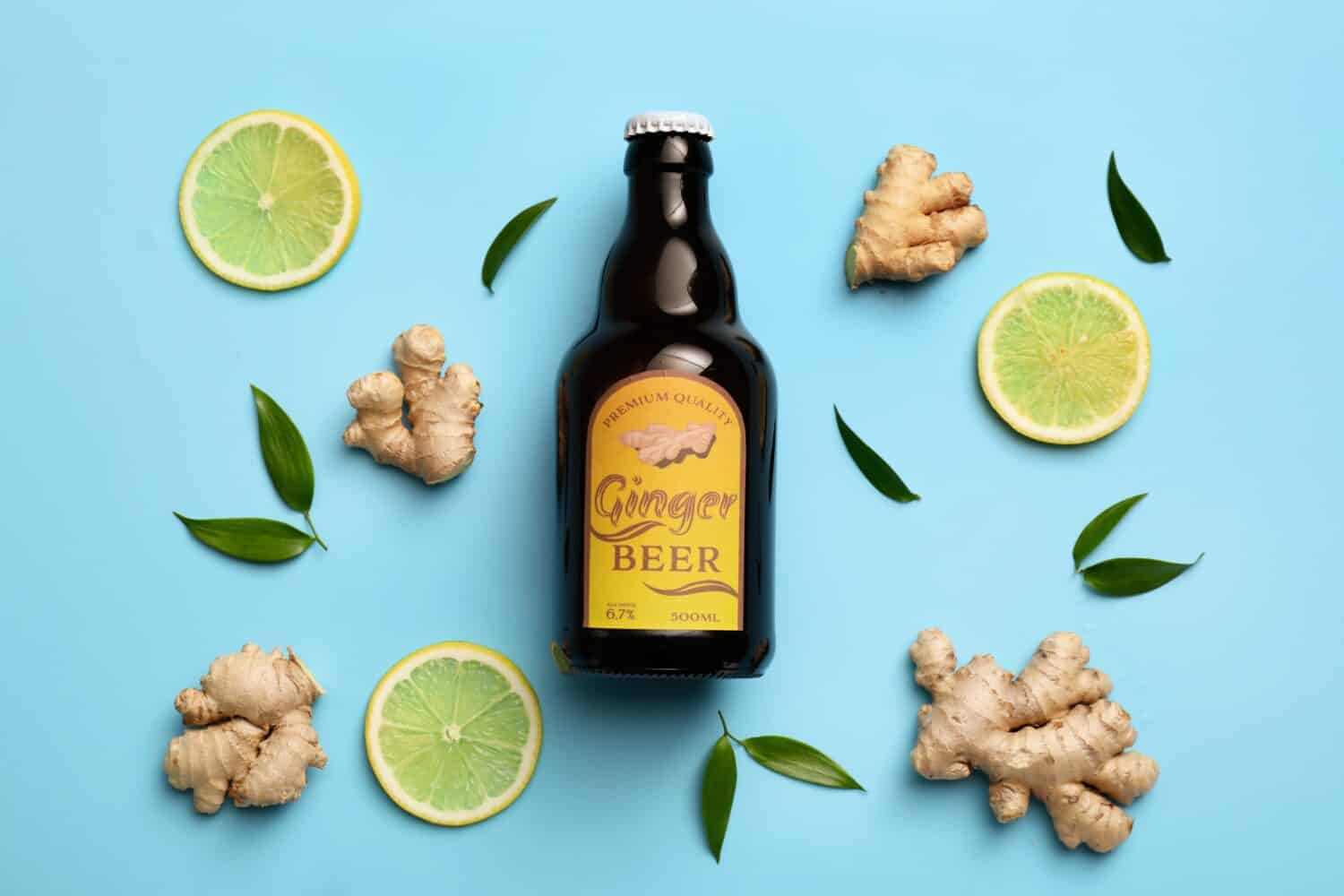
©Pixel-Shot/Shutterstock.com
Ginger Beer Facts
According to The Institute of Beer, ginger beer is made by natural fermentation of water, yeast, ginger, and sugar. The resulting concoction has a light fizz, a strong ginger flavor, and mild sweetness. Even though it’s fermented, the alcohol content is usually low enough to qualify as a non-alcoholic beverage.
This wasn’t always the case. The first ginger beers originated in England, and sometimes lemons were added to the ginger/sugar mixture. These brews had an alcohol content of around 11%. It is possible to find ginger beer with a similar alcohol content today, but most brands are non-alcoholic. Ginger beer is used in cocktails for flavor; other ingredients like vodka or gin provide the alcohol.
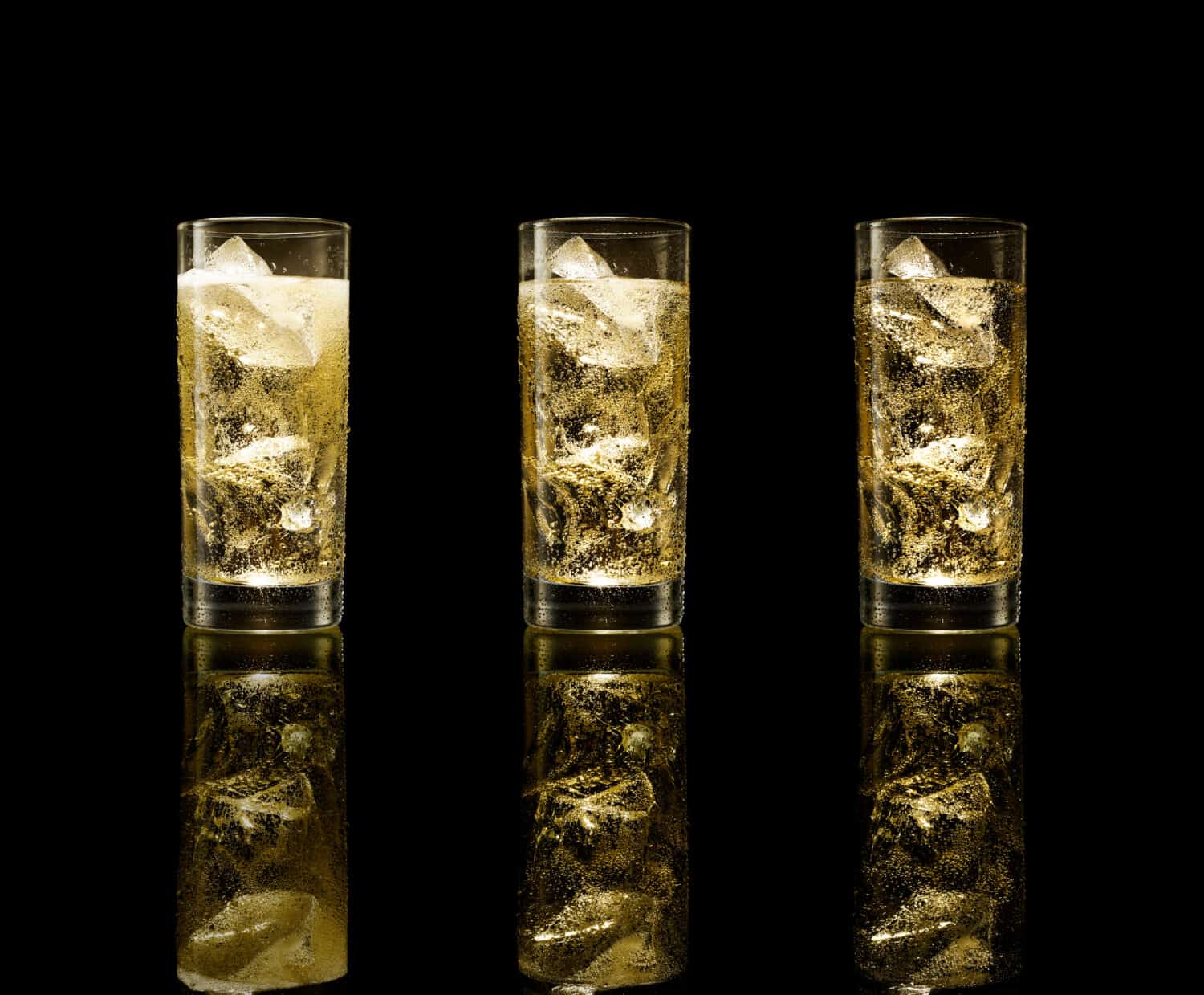
©HS_PHOTOGRAPHY/Shutterstock.com
Ginger Ale Facts
Ginger ale is one of the most popular soft drinks around the world. Its name is misleading because it isn’t a true ale but a non-alcoholic soda. Ginger ale was first made in the 1800s in Ireland by a doctor who touted ginger’s medicinal benefits. It’s considerably cheaper than ginger beer, so unless you need a strong splash of spice, feel free to substitute.
Vernor’s, Schweppe’s, and Canada Dry are some of the brands mass-producing ginger ale in the United States today. Most contain small amounts of real ginger, but most of the soda’s ginger flavor comes from various extracts. Ginger ale’s mild taste makes it a versatile cocktail mixer. Canada Dry has experimented with its own fruity ginger ale products, introducing blackberry, cranberry, lemonade, and other flavors over the years.
5 Key Differences Between Ginger Beer and Ginger Ale
There are five main differences between ginger beer and ginger ale:
| Ginger Beer | Ginger Ale |
|---|---|
| May be alcoholic or non-alcoholic | Non-alcoholic |
| Strong and spicy ginger flavor | Light, mellow hint of ginger flavor |
| Made from brewed and fermented ginger root | Made from ginger concentrate, carbonated water, and sweetener |
| Less fizzy than ginger ale | Highly carbonated and fizzy |
| Most often used in cocktails like the Moscow Mule | Most often consumed by itself as a soft drink |
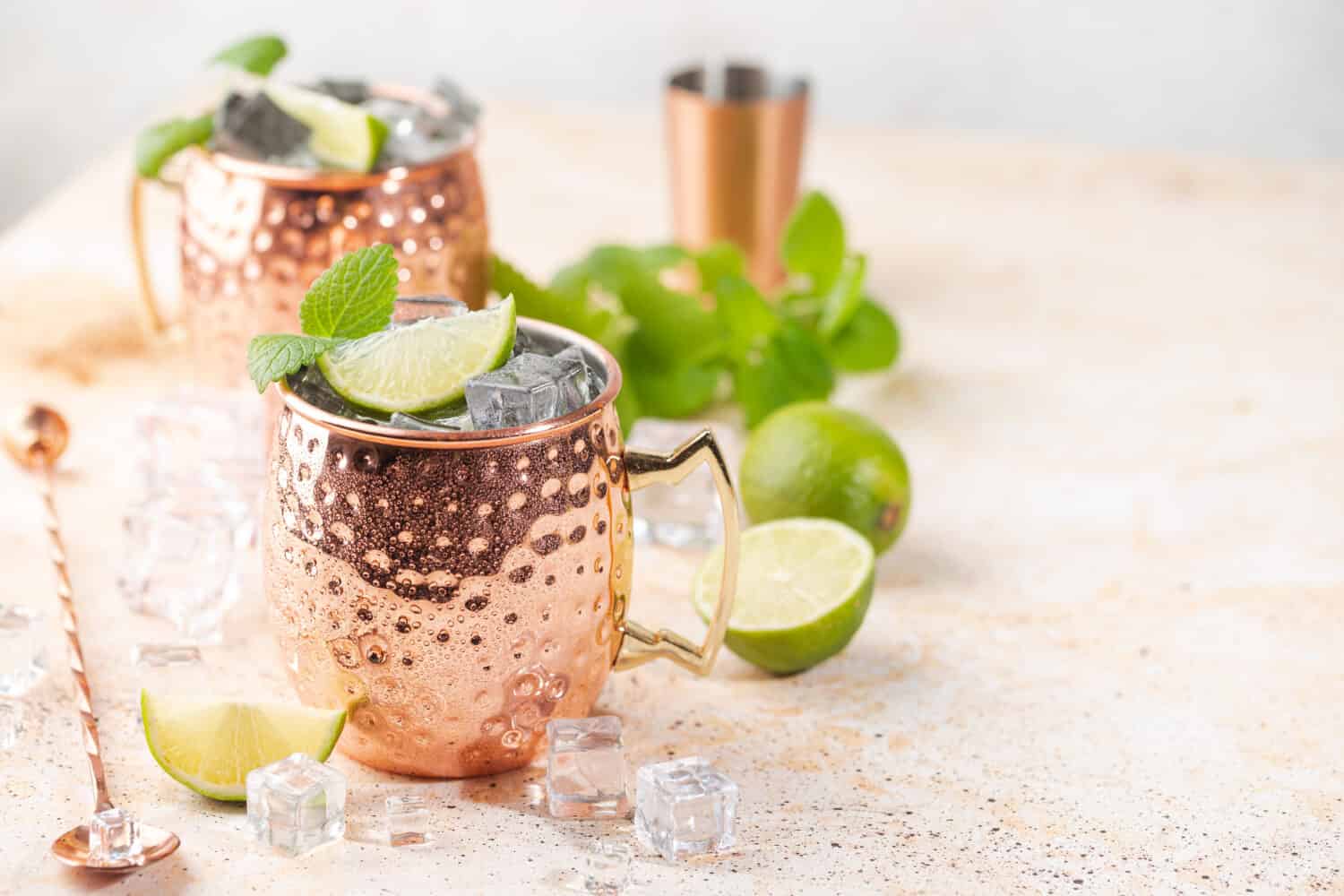
©Goskova Tatiana/Shutterstock.com
Ginger Beer Cocktail Ideas
Say “ginger beer,” and most people automatically envision a hammered copper mug filled with a Moscow Mule. That refreshing combination of ginger beer, lime, and vodka is probably the most well-known ginger beer cocktail. Here are several others to try:
- Dark and Stormy: just like a Moscow Mule, but it uses dark rum instead of vodka.
- Foghorn Cocktail: another Mule knockoff that replaces vodka with gin.
- Blueberry Buck: pairs ginger beer with whisky, lemon, fresh blueberries, and their juice.
- Skeleton Key: made with ginger beer, bourbon, St. Germain elderflower liqueur, and bitters.
- Ginger Beer Paloma: blends grapefruit juice, tequila, ginger beer, lime, and a dash of salt.
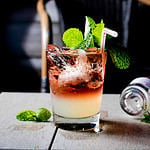
Dark and Stormy
Ingredients
- 4 ounces (1/2 cup) ginger beer
- 2 ounces (4 tablespoons) dark rum, traditionally Gosling’s Black Seal rum
- 1 lime wedge
- Ice, for serving
Instructions
- Fill a highball glass with ice and pour in the ginger beer.
- Pour the rum on top. Squeeze in the lime wedge.
- Stir gently, then serve.
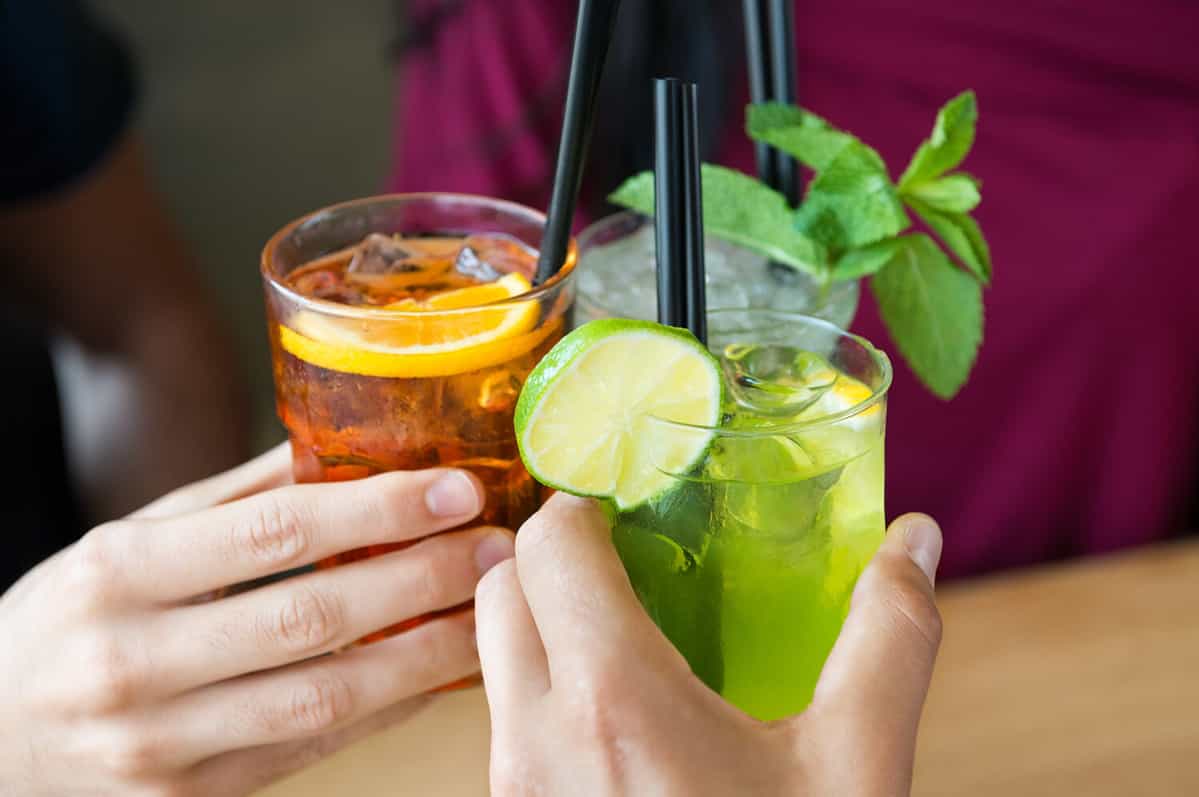
©Ground Picture/Shutterstock.com
Ginger Ale Cocktail Ideas
Ginger ale is such a mild, sweet soda that it works well as a substitute for lemon-lime soda in many cocktail recipes. Several cocktails that call for ginger ale specifically for the mild ginger vibe it adds to the drink. Try these refreshing combinations:
- Ginger Shandy: a simple ratio of one part ginger ale to two parts beer.
- Grumpy Old Man: a funny-named blend of ginger ale, bourbon, and lime juice.
- Pimm’s Cup: a thirst quencher from the 1800s that combines Pimm’s No. 1 liqueur, lemonade, ginger ale, and a multi-fruit garnish.
- Mexican Mule: spices up ginger ale by adding gold tequila, lime, and jalapeno simple syrup.
- Christmas Punch: a holiday favorite that combines cranberry juice, apple cider, and rum, then adds fizz with ginger ale and sparkling wine.
In Conclusion
Both ginger beer and ginger ale are delightfully sweet and spicy bases for a variety of fizzy cocktails. They also work well for calming an upset stomach. It’s possible to brew ginger beer and ginger ale at home, but why bother with so many excellent brands readily available at the store?
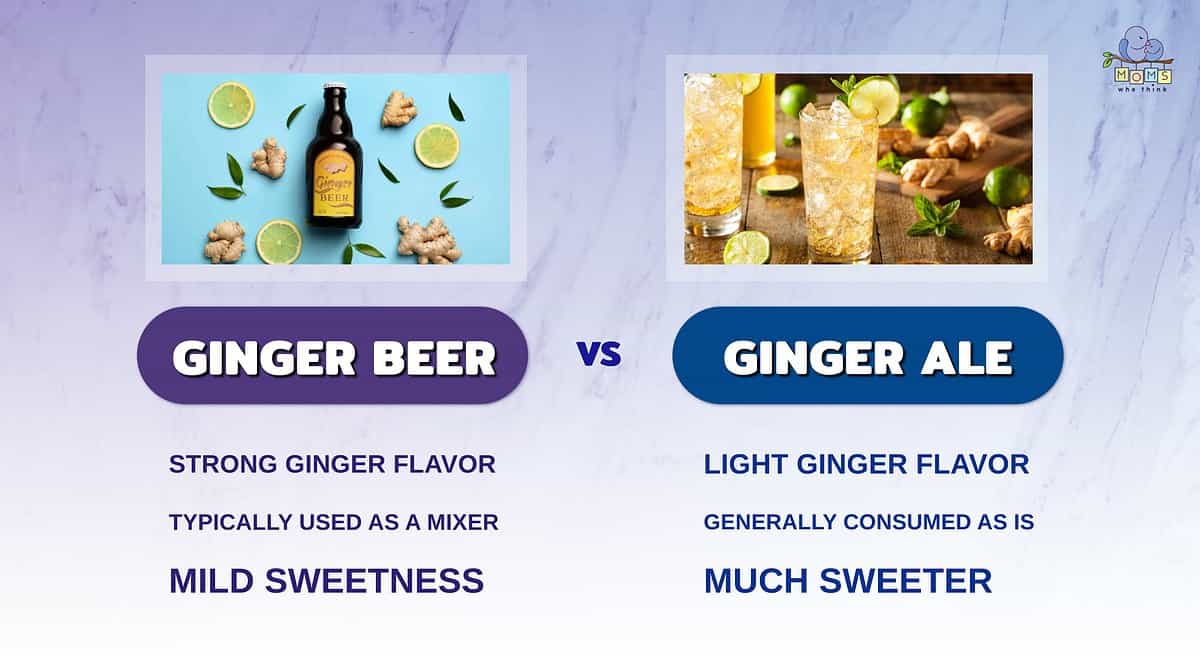
At first glance, you might think these two drinks are very much the same. However, the taste and uses of these two beverages are vastly different. Let's take a look at how these two drinks differ:
- While ginger beer and ginger ale have been used in cocktails, ginger beer is more commonly only in cocktails, whereas ginger ale is typically consumed by itself.
- Ginger beer has a strong, noticeable ginger flavor. On the other hand, ginger ale is much sweeter with a milder ginger flavor, making it perfect to consume on its own.
- While ginger ale is considered a soda and made with carbonated water, and ginger concentrate, ginger beer is made with fermented ginger root giving it that noticeable taste.
Up Next
Tonic Water vs. Club Soda: 4 Key Differences & Which One is Best in Cocktails
High Fructose Corn Syrup vs. Sugar
The image featured at the top of this post is ©Brent Hofacker/Shutterstock.com.
